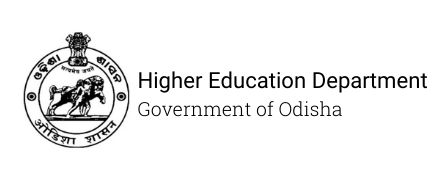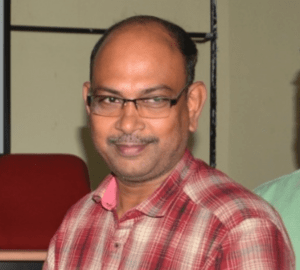Dr. Barik is currently working as Associate Professor at the Department of Botany & Biotechnology since 2010 and as Assistant Controller of Examination since 2016. He has more than 15 years of teaching experience in B.Sc., M.Sc. Botany & Biotechnology in the extended field of plant biotechnology. Within a period of 20 years of research, he has published 54 research papers (Google Scholar Citations: 440, h-index-12, i10-index 13) in the journals of national & international repute. He has produced 4 Ph.D., 11 M. Phil. and 22 M.Sc. (Project) students during his academic period. He obtained his M.Sc. from Utkal University, Bhubaneswar (1997) and Ph.D. from the same University (2004). Afterwards he joined as Lab-Technical Staff in M.Sc. Biotechnology, Dept of Botany, Ravenshaw University. He was awarded with SERB-FAST track young scientist in 2007 to work on “Agrobacterium-transformed hairy root cultures of some important medicinal plants of Orissa as a source of pharmaceutical compounds” at Dept. of Botany, Utkal University till 2010. He was also awarded “Best Record of Publications” by Ravenshaw University on 15th Nov. 2019 & Dr. P. D. Sethi Memorial Annual National Award in 2018. He has organized three National Seminars in various capacities.
His current research is focused on Micropropagation, stimulation, identification, quantification and activity study of the bioactive compounds produced through plant tissue culture and Agrobacterium transformation in important medicinal plants of Odisha.
Selected Publications
- Mitra, D. Verma, D., Mahakur, B., Kamboj, A., Srivastava, R., Gupta, S., Pandey, A., Arora, B., Kumud Pant, K., Panneerselvam, P., Ghosh, A., Barik, D. P., & Das Mohapatra, P. K. (2021). Molecular docking and simulation studies of natural compounds of Vitex negundo L. against papain-like protease (PLpro) of SARS CoV-2 (coronavirus) to conquer the pandemic situation in the world. Journal of Biomolecular Structure and Dynamics, https://doi.org/10.1080/07391102.2021. 1873185.
- Das, A., Sahoo, R. K., Barik, D. P., & Subudhi, E. (2020). Duplicates in Ginger germplasm collection from Odisha using morphological and molecular characterization. Proceedings of the National Academy of Sciences, India Section B:Biological Sciences, https://doi.org/10.1007/s40011-020-01178-y.
- Behera, S., Kar, S. K., Rout, K. K., Barik, D. P., Panda, P. C., & Naik, S. K. (2019). Assessment of genetic and biochemical fidelity of field-established Hedychium coronarium Koenig regenerated from axenic cotyledonary nodeon meta-topolin supplemented medium. Ind. Industrial Crops & Products, 134, 206–215.
- Pradhan, S. K., Nayak, D. K., Pandit, E., Behera, L., Anandan, A., Mukherjee, A. K., Lenka, S., & Barik, D. P. (2016). Incorporation of bacterial blight resistance genes into lowland rice cultivar through marker-assisted backcross breeding. Phytopathology, 106, 710-718.
- Barik, D. P., Mohapatra, U., & Chand, P. K. (2005). Transgenic grasspea (Lathyrus sativus): Factors influencing Agrobacterium-mediated transformation and regeneration. Plant Cell Reports, 24, 523 – 531.

Registrar | Ravenshaw University | Cuttack – 751003 | Odisha | India
Phone : +91-6712201690 | Email : registrar[at]ravenshawuniversity[dot]ac[dot]in







